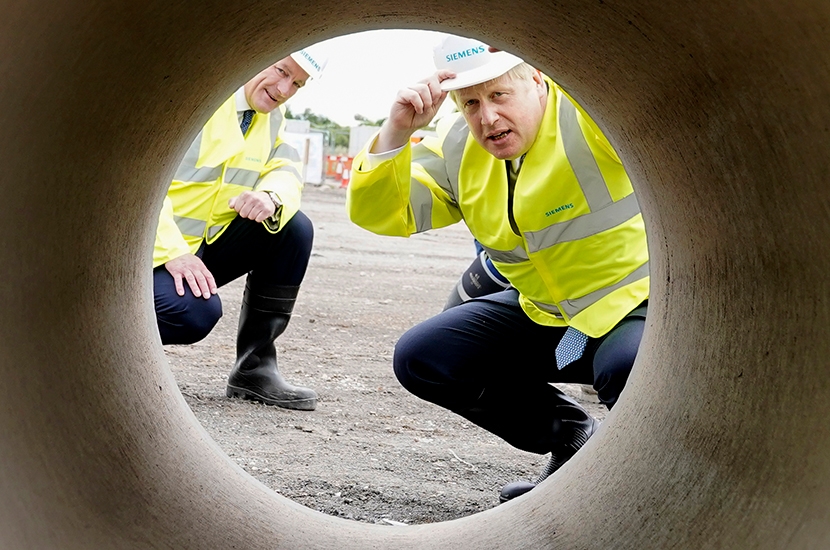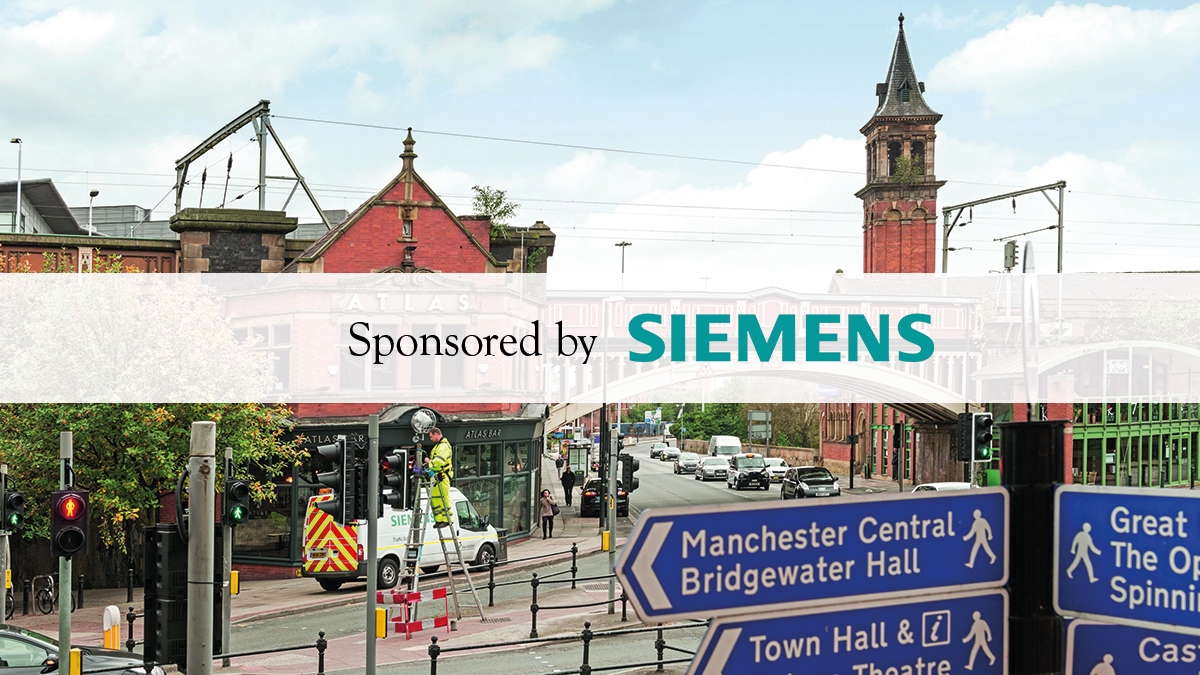What seems like an age ago, the Conservatives swept to victory with a stonking majority on a wave of Red Wall seats turning blue, backed by the promise to level up the country.
Less than a year on, questions are being asked about whether those promises — like reopening rail lines closed by Dr Beeching — are affordable when Covid-19 has forced public borrowing through the roof.
The answers lie in prioritising investments on the basis of how well they level up Britain, and in cutting red tape and enabling private financing to deliver more for less. That way we can stimulate the jobs and post-Brexit growth which will power our recovery from the pandemic-induced recession.
Firstly, we should prioritise investment in infrastructure that levels up the economy and creates jobs and growth. For too long road and rail infrastructure in the north of England suffered from the way we assessed value for money — often a crude combination of per capita GDP and minutes saved on a journey divided by the cost, rather than considering the wider economic benefits.
So, jobs and growth stimulated in the towns and cities served by our infrastructure need to be a key consideration when prioritising where to invest.

‘Levelling up was a solution before the crisis, it is even more urgent now’ [Robert Colvile, CPS]
That’s why projects like upgrading the TransPennine rail line and the M62 motorway between Leeds and Manchester and beyond to cities like Liverpool and Hull are so important.
But this isn’t just a narrow north vs south issue. As last year’s Centre for Policy Studies A Rising Tide report pointed out, ‘flattening down’ London and the south-east would damage the whole UK economy. In fact investment in one region can create jobs in another: we will be building the new Piccadilly Line Tube trains in Goole, East Riding of Yorkshire, which means we’re already taking on apprentices from nearby towns and investing in local suppliers as we build our new factory.
What any business will tell you is what matters for such investments is certainty. Government committing now to a pipeline of projects will mean ourselves and our competitors can continue to invest, even in the face of an economic downturn.
Many of you will be asking ‘great, but where’s the money for all this coming from?’ With government borrowing reaching record levels as we fight the coronavirus, that’s an important question.
So, secondly, we should cut red tape so that we can do more for less money and enable greater private financing of public infrastructure to ease the burden on taxpayers.
On red tape, the government’s Project Speed is therefore very welcome. Streamlining planning processes and not tinkering with the scope of projects while they are being delivered will mean projects get finished quicker and at lower costs.

And Brexit provides a once-in-a-generation chance to streamline public procurement, which can reduce the time taken between a minister announcing a project and cutting the ribbon on it — which should matter to a government that promised to deliver investments by 2024.
The bigger prize though may come from private financing. In places like Australia new rail lines and roads are routinely privately financed. For many years we’ve been told that private capital is lining up to invest in the UK and realising this could reduce the burden on the taxpayer of levelling up.
But we need a more pragmatic approach. For example, public-private financing might on paper increase public borrowing if that’s how the ONS categorises it, but in practice the government’s liability is reduced. Let’s do away with the insistence that private financing can only take place if a project is off the balance sheet. Government should also agree a standardised approach to sharing risk and reward between public and private partners, and then let authorities beyond Westminster innovate to invest.
This should include identifying appropriate revenue streams which can be wholly or partly allocated to investors privately financing projects in order to make these financially viable.

That might, for example, mean Siemens financing new trains and signalling for an upgraded rail line, and government allocating a share of the track access charges paid by train operators (and funded by rail fares) over a 15-year period to pay off that financing.
Finally, when privately or publicly financing infrastructure investment to level up, we should be using this as the chance to decarbonise our transport system. Diesel trains and cars are still belching out fumes in our towns and cities, and on our trunk roads and rail lines up and down the country.
With the eyes of the world on the UK when next year’s COP26 conference comes to Glasgow, we can become world leaders in hydrogen and battery trains and electric vehicles, while rolling out more electrified rail lines and clean air zones in cities to keep the air we breathe free from pollution.
As well as being good for people’s health and that of the planet, this can establish the UK as a leading exporter of low carbon, low pollution technology. For example, cities around the world are buying traffic management systems made at our factory in Poole. Glasgow can provide the showcase to the world for post-Brexit Britain as a lean, green economy.
We do not need to abandon the Prime Minister’s vision of building back better, faster and greener in the face of Covid-19. In fact, it is even more urgent than ever as we seek to undo the economic damage caused by the pandemic.
By prioritising investment that levels up and stimulates jobs and growth, by cutting red tape and enabling private financing, and using this to decarbonise our transport network, we can lay the groundwork for a revitalised and prosperous post-Brexit UK to emerge in the coming years.
By William Wilson, CEO, Siemens Mobility Limited
This article is free to read
To unlock more articles, subscribe to get 3 months of unlimited access for just $5








Comments
Join the debate for just $5 for 3 months
Be part of the conversation with other Spectator readers by getting your first three months for $5.
UNLOCK ACCESS Just $5 for 3 monthsAlready a subscriber? Log in